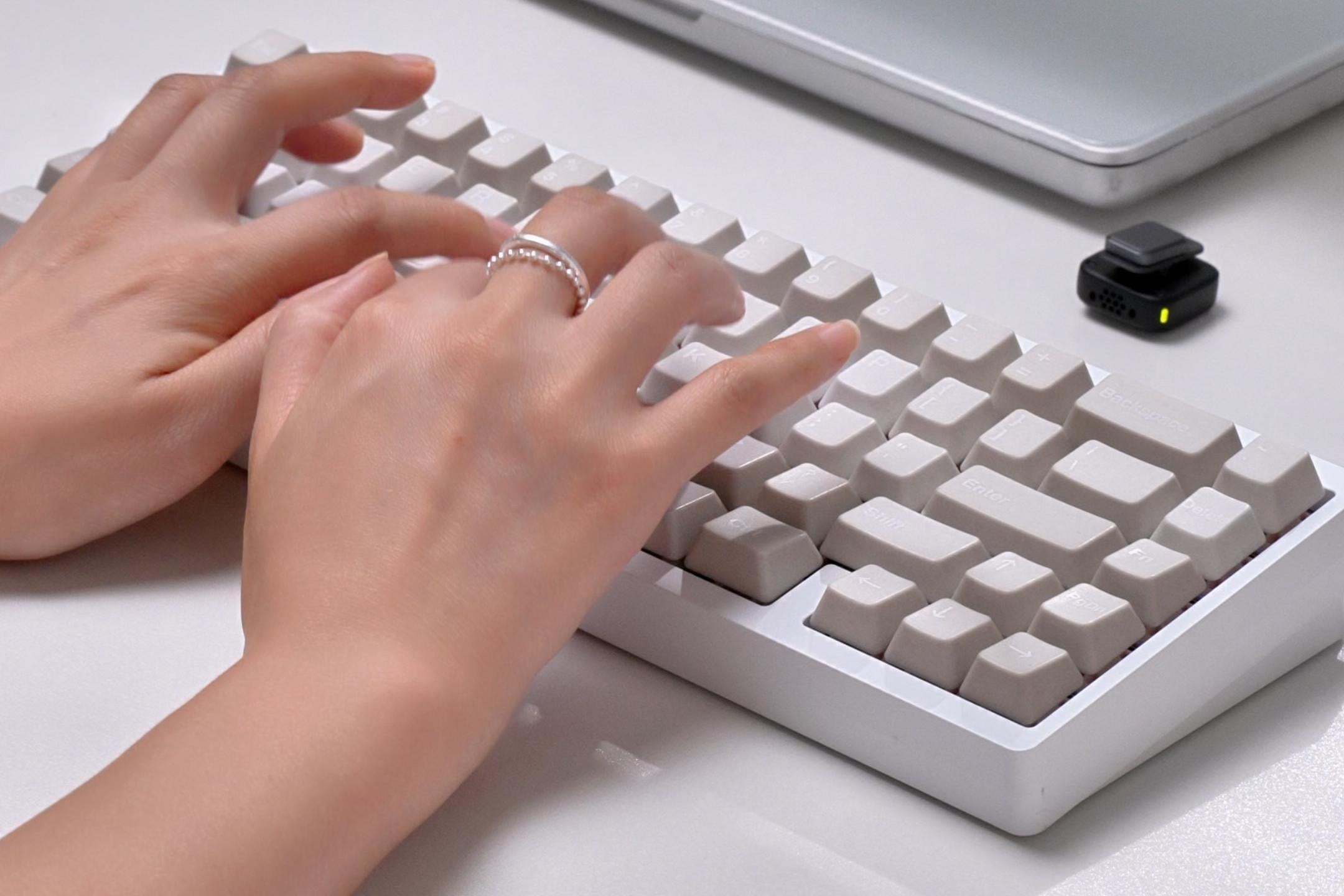When setting up the perfect workstation or gaming rig, one of the most debated accessories is the wrist rest. Often overlooked, these simple cushions or pads promise comfort and ergonomics, yet many people wonder: do I really need one?
Whether you’re a writer, gamer, or office worker, the answer is more nuanced than a simple yes or no. Let’s dive into why wrist rests might be the game-changer you’ve been missing—and how they can benefit your health and performance.
1. What is a Wrist Rest?
A wrist rest is a padded support, usually made of foam, gel, or memory foam, designed to be placed in front of your keyboard or mouse. Its purpose is to provide comfort and ergonomic support by reducing strain on your wrists during long typing or gaming sessions.
-
Keyboard wrist rests are typically placed in front of the keyboard, allowing your wrists to rest comfortably while typing.
- Mouse wrist rests are positioned near your mouse to support your wrist and reduce the angle at which your hand is held.
These accessories are commonly found in both office setups and gaming rigs, especially for people who spend hours on their computers every day.
2. Why Should I Consider a Wrist Rest?
Long-term use of computers can lead to discomfort or even injury, such as carpal tunnel syndrome or repetitive strain injuries. Here’s how a wrist rest can help:
Reducing Strain and Discomfort
When you type or use a mouse, your wrists are often in a bent position, which can cause discomfort over time. A wrist rest encourages a more neutral wrist position, reducing strain on the muscles and tendons in your hands and forearms.
Promoting Better Posture
A wrist rest helps align your wrists at a more natural angle, preventing excessive bending or stretching. This encourages better posture and can help reduce neck or back pain caused by improper wrist positioning.
Enhanced Comfort During Long Sessions
Whether you’re gaming for hours or working on a project, comfort is key to staying productive and focused. Wrist rests provide cushioning and reduce pressure points, making long typing or gaming sessions more comfortable.
3. Who Benefits Most from Wrist Rests?
While wrist rests are beneficial to anyone using a keyboard or mouse for extended periods, some people can benefit even more:
1. Office Workers
For office professionals who spend hours typing each day, wrist rests are essential. They can prevent fatigue and reduce discomfort in the wrists, hands, and forearms, making long days more manageable.
2. Gamers
Gamers often spend extended periods with their hands in a fixed position. Wrist rests can help reduce strain during long gaming sessions, providing comfort and stability for quick movements and clicks.
3. Writers and Programmers
People who type for long hours, such as writers or programmers, can suffer from wrist strain or tendonitis. Using a wrist rest helps to minimize the risk of repetitive stress injuries, promoting a more comfortable typing position.
4. Types of Wrist Rests: Which One Should You Choose?
When selecting a wrist rest, the material, size, and shape are important factors to consider. Here are the most common options available:
1. Gel Wrist Rests
- Comfort: Gel wrist rests are known for their softness and cooling effect, providing great comfort during long sessions.
- Pros: They contour to your wrist shape, offering personalized support.
- Cons: Gel can sometimes lose its firmness over time and may become less effective.
2. Memory Foam Wrist Rests
- Comfort: Memory foam provides great support and conforms to the shape of your wrist, offering a customized fit.
- Pros: Offers excellent cushioning and pressure relief.
- Cons: Foam may compress over time, and some users may find it too soft.
3. Fabric and Foam Wrist Rests
- Comfort: Fabric-covered foam wrist rests are generally firm and offer a solid feel with good support.
- Pros: Affordable and easy to clean.
- Cons: They don’t provide as much conforming support as gel or memory foam.
4. Leather Wrist Rests
- Comfort: Leather wrist rests provide a luxurious look and feel. They are easy to clean but might not be as soft as memory foam.
- Pros: Durable, stylish, and often come with a smooth surface.
- Cons: Leather may not offer as much cushioning or comfort for extended use.
5. Custom Wrist Rests
For those who want a truly personalized experience, custom wrist rests are available. These can be tailored to your exact specifications, including size, material, and even custom embroidery or logos.
5. Do Wrist Rests Really Help with Carpal Tunnel Syndrome?
Carpal Tunnel Syndrome (CTS) is a condition that affects the median nerve in the wrist, often caused by repetitive motions and poor ergonomics. While wrist rests cannot completely prevent CTS, they can reduce the risk by keeping your wrist in a more neutral position, which minimizes pressure on the nerve.
- Wrist rests encourage proper wrist alignment, which is crucial for preventing CTS.
- Ergonomics: Combining a wrist rest with adjustable chairs, keyboard positioning, and keyboard height can further reduce the strain on your wrists.
For those who already have carpal tunnel syndrome or experience regular wrist pain, wrist rests can be an important part of an ergonomic workstation to help reduce discomfort.
6. How to Use Wrist Rests Effectively
To maximize the benefits of wrist rests, here are some best practices:
- Positioning: Ensure that the wrist rest is aligned with the keyboard so that your wrists don’t have to bend in unnatural angles.
- Height Adjustment: Your keyboard should be at a height that allows your wrists to rest flat on the wrist rest without straining or bending.
- Keep Your Wrists Neutral: Avoid bending your wrists at sharp angles while typing. Keep your wrists in a neutral position for optimal comfort.
Conclusion: Should You Get a Wrist Rest?
Wrist rests are not a one-size-fits-all solution, but they can be a valuable addition to your setup if you spend significant time typing or using a mouse. Comfort, ergonomics, and prevention of strain injuries are just a few of the benefits they provide.
If you’re experiencing discomfort or pain while using your keyboard or mouse, a wrist rest might be exactly what you need. It’s an affordable, easy-to-use accessory that can help boost your productivity, improve your comfort, and protect your wrists in the long run.
FAQs
Q1: What material is best for wrist rests?
The best material depends on your personal preference. Gel and memory foam provide the best cushioning, while fabric and foam are more affordable and easy to maintain.
Q2: Can wrist rests help with carpal tunnel syndrome?
While wrist rests can’t cure carpal tunnel syndrome, they can help prevent it by promoting a more neutral wrist position and reducing strain on the wrists.
Q3: How do I know if I need a wrist rest?
If you experience wrist pain, numbness, or discomfort after prolonged typing or gaming sessions, a wrist rest may provide the support you need to alleviate these symptoms.
Q4: Are wrist rests only for gamers?
No, wrist rests are useful for anyone who spends a lot of time typing, including office workers, writers, programmers, and designers.
Q5: Can I use a wrist rest with any keyboard or mouse?
Yes, wrist rests are compatible with most keyboards and mice, but make sure to choose the right size and type to match your setup.




แสดงความคิดเห็น
เว็บไซต์นี้ได้รับการคุ้มครองโดย hCaptcha และมีการนำนโยบายความเป็นส่วนตัวของ hCaptcha และข้อกำหนดในการใช้บริการมาใช้